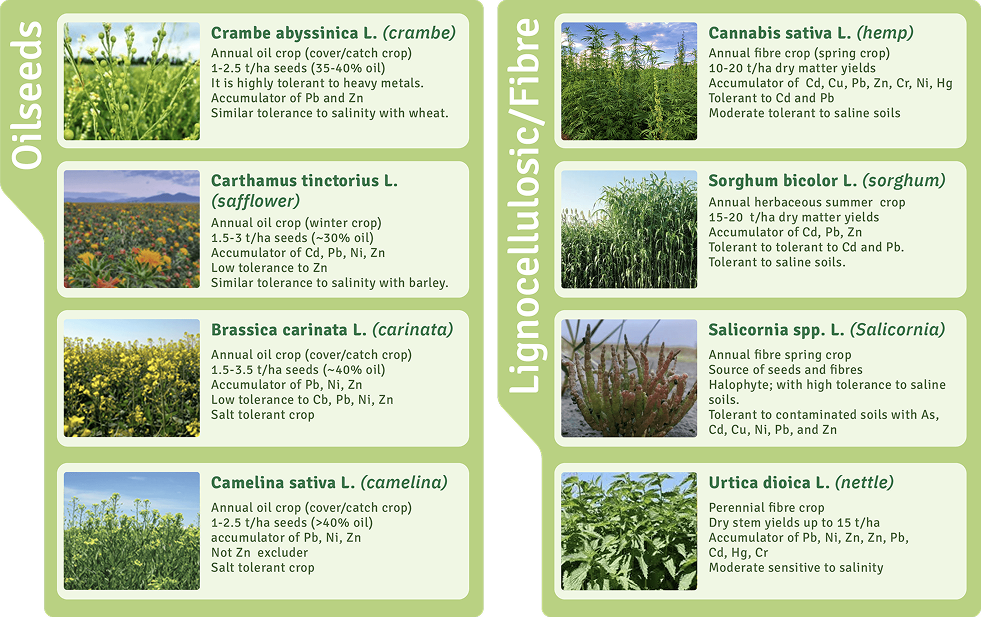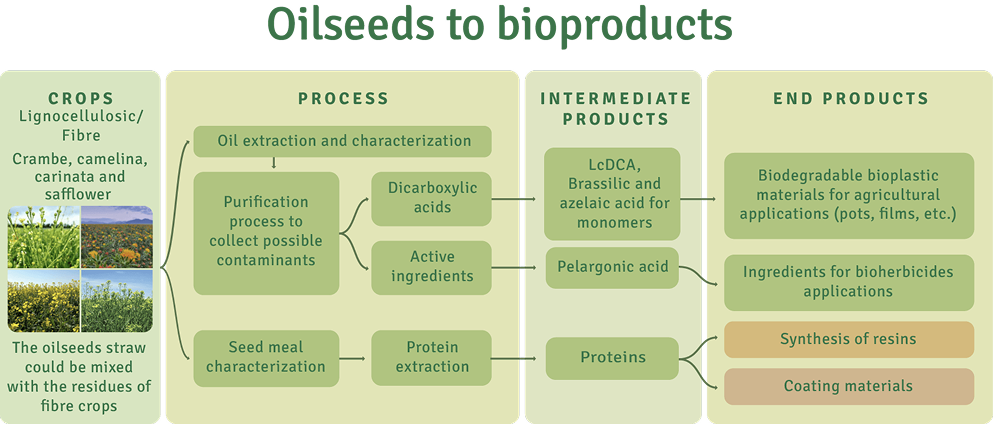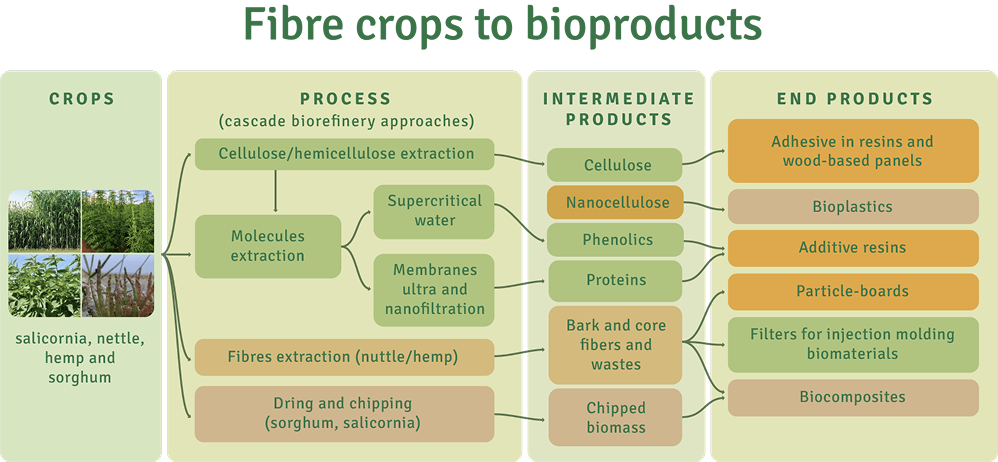Activities
IASIS is structured around a series of key activities each one addressing a specific aspect of the project’s objectives.
Crop optimisation and phytomanagement strategies
This activity aims to optimise high-yielding industrial crops for restoring contaminated lands affected by heavy metals or organic/inorganic pollutants and remediating salt-affected soils. Activities include developing improved genotypes and breeding tools, as well as developing phytomanagement strategies with the use of microbial consortia. These will be tested and validated in eight field case studies across Europe.

From case studies to lighthouses
This activity focuses on establishing and monitoring eight Field Case Studies in Europe. These sites will produce feedstock for value chains and bio-products development and serve as training grounds for the farming community. The field case studies will test and validate the optimised phytomanagement solutions, engage and train the farming community, and produce the necessary feedstock for bio-based products. Successful case studies will be promoted as “IASIS Lighthouses,” showcasing practical, replicable solutions for contaminated and saline soils.
In each site 3 to 5 crops are be tested.
Crambe is the common crop in all the contaminated sites, while salicornia is the common crop in all the saline sites.
Improved genotypes developed for both crops are tested at the field case studies.
Development of high-value bio-based products
This activity uses a cascading biorefinery approach to extract valuable compounds from industrial crops (oilseeds and lignocellulosic ones) and convert them into high-value products. Ten intermediate and ten end products will be produced from from oilseeds and from lignocellulosic crops.
Sustainability and value chain assessment
This activity develops a Decision Support System (DSS) and applicable business models tailored to IASIS’ needs. The DSS will evaluate various biomass-to-product pathways and select the most promising ones based on economic viability and sustainability. The assessment will include environmental impact, economic feasibility, and social life cycle analysis. This WP will also outline the regulatory framework and propose policy recommendations to support the wider adoption of the project’s findings.
Dissemination communication and exploitation
This activity focuses on raising awareness and sharing the project’s findings with relevant key stakeholders, including the farming community, bio-based industry, policymakers, and the general public.



